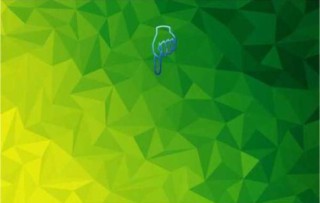LPG hose Full-time Job
2022-11-03 00:29 Public Service Sāmarrā’ 20 views Reference: 2165Job Details
The SAE standards
SAE answers those questions with its J517 hydraulic hose standard. This LPG hose standard serves as the most popular benchmark in the realm of industrial hydraulics today. More specifically, J517 is a set of guidelines that applies to the current SAE 100R series of hoses. Currently, 16 such hose styles exist, and they are designated as 100R1 through 100R16 (see descriptions, pages A105 and 106). Each of the styles must meet a set of dimensional and performance characteristics as set forth by SAE. However, SAE issues no approval source lists, certification, or letters of approval-conformance to these standards by manufacturers is strictly voluntary. In short, the standards only assure a similarity of products among different manufacturers.
Not surprisingly, hydraulic hoses have a finite life. Proper sizing and use of the correct type of TPR LPG hose will certainly extend the life of a hose assembly, but there are many different factors that affect a hose's lifespan. SAE identifies some of the worst offenses as:
Size - In order to select the proper hose size for replacement, it is important to measure the inside and natural gas hose diameters exactly using a precision-engineered caliper, as well as the length of the hose. Hose OD is particularly important when hose-support clamps are used or when hoses are routed through bulkheads. Check individual hose specification tables for ODs in suppliers' catalogs. When replacing a hose assembly, always cut the new hose the same length as the one being removed. Moving components of the equipment may pinch or even sever too long a hose. If the replacement hose is too short, pressure may cause the hose to contract and be stretched, leading to reduced service life.
Application - Will the selected hose meet bend radius requirements? This refers to the minimum bend radius (usually in inches) that a hydraulic hose must meet. Exceeding this bend radius (using a radius smaller than recommended) is likely to injure the hose reinforcement and reduce hose life.
Route high-pressure hydraulic lines parallel to machine contours whenever possible. This practice can help save money by reducing line lengths and minimizing the number of hard-angle, flow-restricting bends. Such routing also can protect lines from external damage and promote easier servicing.
Materials - It is mandatory to consult a compatibility chart to check that the tube compound is compatible with the fluid used in the system. Elevated temperature, fluid contamination, and concentration will affect the chemical compatibility of the tube and fluid. Most hydraulic hoses are compatible with petroleum-based oils. Note that new readily biodegradeable or green fluids may present a problem for some csa natural gas hose.
Pressure capabilities - Hose working pressure must always be chosen so that it is greater than or equal to the maximum system pressure, including pressure spikes. Pressure spikes greater than the published working pressure will significantly shorten hose life.
Hose ends - The coupling-to-hose mechanical interface must be compatible with the hose selected. The proper mating thread end must be chosen so that connection of the mating components will result in leak-free sealing.
There are two general categories of couplings to connect most types of hose: the permanent type (used primarily by equipment manufacturers, large-scale rebuilders, and maintenance shops) and the field-attachable type.
Permanently attached couplings are cold-formed onto the hose with powered machinery. They are available for most rubber and thermoplastic hoses and offer a wide range of dependable connections at low cost. Assemblies made in the field with portable machines are relatively simple; these machines are economical and easy to operate. In most cases, it is not necessary to skive the cover. These couplings are less complicated to install than other types.
Field-attachable couplings are classified as screw-together and clamp-type. The screw-together coupling attaches to the hose by turning the outer coupling shell over the outside diameter of the hose. The coupling insert is then screwed into the coupling shell. A clamp-type coupling has a 2-piece outer shell that clamps onto the hose OD with either two or four bolts and nuts.
This hose should be used in low pressure and vacuum applications, with petroleum- and water-based hydraulic fluids, within a temperature range from -40° to 100° C.
It is constructed with an inner tube of oil-resistant synthetic rubber, a reinforcement consisting of a ply, or plies, of woven or braided textile fibers with a suitable spiral of body wire, and an oil- and weather-resistant synthetic rubber cover.
This hose should be used with petroleum- and water-based hydraulic fluids, within a temperature range from -40° to 100° C.
It is constructed with an inner tube of oil-resistant synthetic rubber reinforced with two textile braids separated by a high-tensile-strength steel-wire braid. All of the braids are impregnated with an oil- and mildew-resistant synthetic rubber compound.
This high-pressure csa natural gas hose kit should be used with synthetic, petroleum- and water-based hydraulic fluids within a temperature range from -40° to 93° C.
It consists of a thermoplastic inner tube resistant to hydraulic fluids with suitable synthetic-fiber reinforcement and a hydraulic fluid- and weather-resistant thermoplastic cover. Nonconductive 100R8 is identified with an orange cover and appropriate lay line. Its pressure capacity is similar to that of 100R2.


